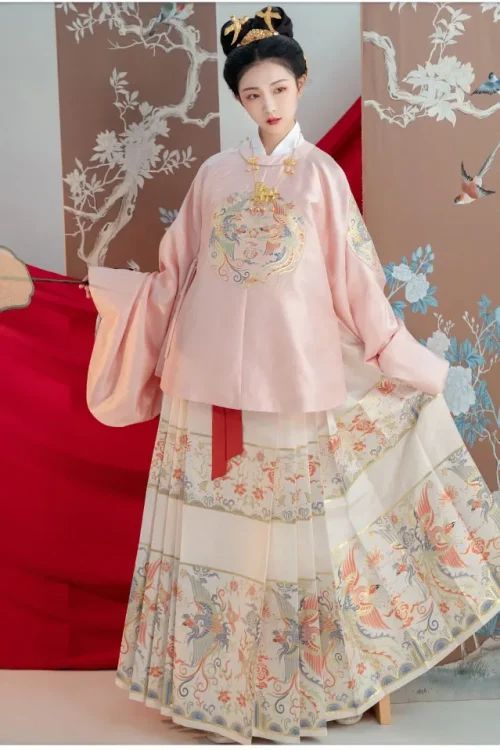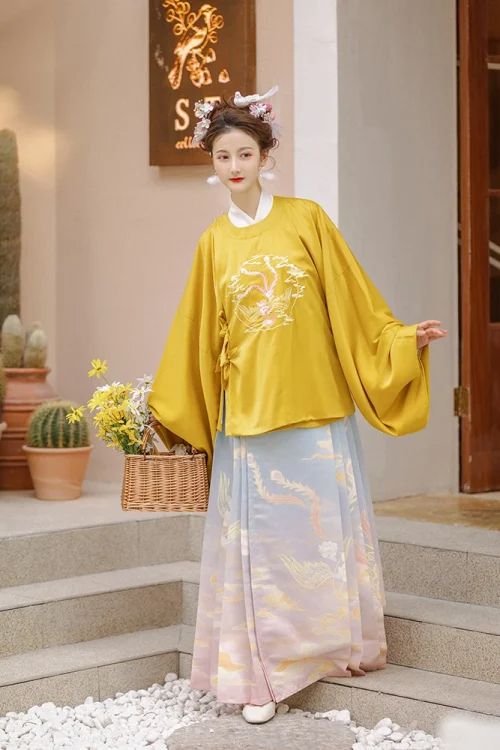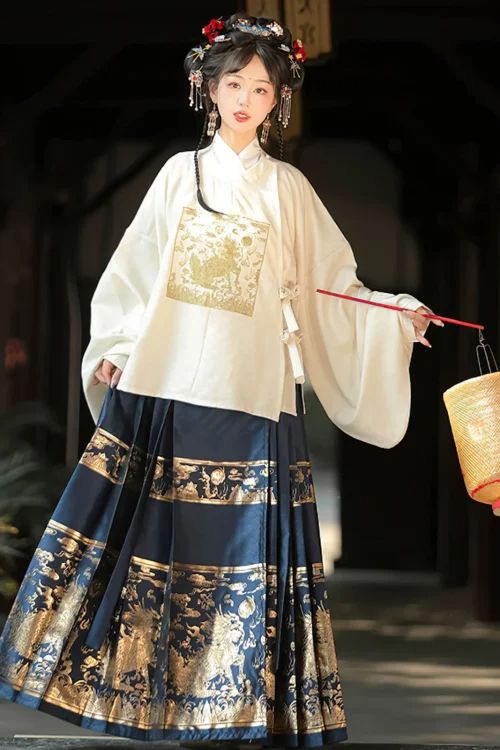Cultural Differences and Lack of Familiarity
Despite its rich history and cultural significance, 汉服, the traditional clothing of China, has yet to gain widespread adoption in Western countries. This phenomenon can be attributed to a combination of cultural differences and a lack of familiarity.
Cultural differences play a significant role in shaping fashion preferences. Western clothing styles emphasize comfort, functionality, and individuality, while Hanfu embodies traditional values of modesty, elegance, and cultural heritage. The intricate designs, flowing fabrics, and elaborate accessories of Hanfu may not align with the aesthetic sensibilities of Westerners accustomed to more streamlined and casual attire.

Furthermore, the lack of familiarity with Hanfu contributes to its limited appeal in the West. Unlike Western clothing, which has been widely disseminated through global media and fashion industries, Hanfu remains relatively unknown outside of China. This lack of exposure makes it difficult for Westerners to appreciate the beauty and significance of Hanfu, hindering its adoption.
Moreover, the cultural context in which Hanfu is worn also influences its acceptance. In China, Hanfu is associated with traditional festivals, cultural events, and historical reenactments. However, in Western countries, there is no such established cultural context for wearing Hanfu, making it appear out of place in everyday settings.
Additionally, the availability and accessibility of Hanfu in Western countries are limited. While Hanfu can be purchased online or through specialized retailers, it is not as readily available as Western clothing. This limited availability makes it more challenging for Westerners to acquire and incorporate Hanfu into their wardrobes.
In conclusion, the lack of adoption of Hanfu in Western countries stems from a combination of cultural differences, unfamiliarity, and limited availability. To bridge this gap, efforts to promote cultural exchange and education about Hanfu are crucial. By showcasing its beauty, significance, and versatility, Hanfu can gradually gain recognition and appreciation in the West, fostering a deeper understanding of Chinese culture and its rich traditions.
Practicality and Accessibility Issues
Despite its captivating aesthetics and cultural significance, Hanfu has yet to gain widespread adoption in Western countries. While its popularity has grown in recent years, particularly among enthusiasts, several practical and accessibility issues continue to hinder its broader acceptance.
One significant barrier is the perceived impracticality of Hanfu in modern Western lifestyles. The elaborate designs and flowing fabrics, while visually stunning, may not be suitable for everyday activities or professional settings. The intricate layers and fastenings can be time-consuming to put on and take off, making it less convenient for daily wear. Additionally, the delicate fabrics and embellishments require specialized care and maintenance, which can be a deterrent for those seeking low-maintenance clothing options.
Accessibility is another challenge. Hanfu is primarily produced in China, and its availability in Western countries can be limited. While online retailers have made it easier to purchase Hanfu, sizing and fit can be an issue, as traditional Chinese sizing systems differ from Western ones. Moreover, the cost of authentic Hanfu can be prohibitive for many, especially considering the specialized materials and craftsmanship involved.

Cultural differences also play a role in the limited adoption of Hanfu. In Western societies, there is a strong emphasis on individualism and self-expression through fashion. Hanfu, with its traditional designs and cultural connotations, may not align with the personal style preferences of many Westerners. Additionally, the lack of familiarity with Chinese culture and history can make it difficult for Westerners to fully appreciate the significance and beauty of Hanfu.
Despite these challenges, there are efforts underway to promote the adoption of Hanfu in Western countries. Cultural exchange programs, fashion shows, and online communities have helped to raise awareness and foster appreciation for this traditional attire. Some designers are also experimenting with modern interpretations of Hanfu, incorporating elements of Western fashion to make it more accessible and appealing to a wider audience.
In conclusion, while Hanfu has undeniable aesthetic and cultural value, its adoption in Western countries is hindered by practical and accessibility issues. The perceived impracticality, limited availability, and cultural differences pose significant barriers to its widespread acceptance. However, ongoing efforts to promote cultural exchange and adapt Hanfu to Western lifestyles may pave the way for its future adoption and appreciation in the West.
Lack of Representation and Promotion
Despite its rich history and cultural significance, Hanfu has yet to gain widespread adoption in Western countries. This lack of acceptance can be attributed to several factors, including a lack of representation and promotion.
Firstly, Hanfu has historically been underrepresented in Western media and popular culture. While Western fashion has been heavily influenced by various cultures, Chinese traditional clothing has received relatively little attention. This limited exposure has hindered Western audiences from developing an appreciation for Hanfu’s beauty and versatility.

Moreover, the promotion of Hanfu in Western countries has been insufficient. While there are some enthusiasts who actively promote Hanfu through online platforms and cultural events, their efforts have not reached a mainstream audience. As a result, many Westerners remain unaware of Hanfu’s existence or its cultural significance.
Furthermore, the lack of availability of Hanfu in Western markets has also contributed to its limited adoption. While there are some online retailers that sell Hanfu, the selection is often limited, and the prices can be prohibitive for many consumers. This lack of accessibility makes it difficult for Westerners to acquire and wear Hanfu regularly.
In addition to these factors, cultural differences may also play a role in the limited adoption of Hanfu in Western countries. Western fashion tends to emphasize comfort and practicality, while Hanfu is often more formal and elaborate. This difference in aesthetics may make Hanfu less appealing to some Western consumers.
To address these challenges, it is essential to increase the representation of Hanfu in Western media and popular culture. This can be achieved through collaborations with fashion designers, stylists, and influencers who can showcase Hanfu in a modern and accessible way. Additionally, cultural events and exhibitions can provide opportunities for Western audiences to experience Hanfu firsthand and learn about its history and significance.
Furthermore, promoting Hanfu through online platforms and social media can help to raise awareness and generate interest among Western consumers. By creating engaging content that highlights the beauty and versatility of Hanfu, enthusiasts can attract a wider audience and encourage them to explore this unique cultural heritage.
Finally, increasing the availability of Hanfu in Western markets is crucial for its widespread adoption. This can be achieved through partnerships with local retailers and manufacturers who can produce and distribute Hanfu at affordable prices. By making Hanfu more accessible, Western consumers will be more likely to incorporate it into their wardrobes and embrace its cultural significance.
In conclusion, the lack of adoption of Hanfu in Western countries can be attributed to a combination of factors, including limited representation, insufficient promotion, lack of availability, and cultural differences. By addressing these challenges through increased representation, promotion, accessibility, and cultural exchange, we can foster a greater appreciation for 汉服 and its rich cultural heritage in the West.
